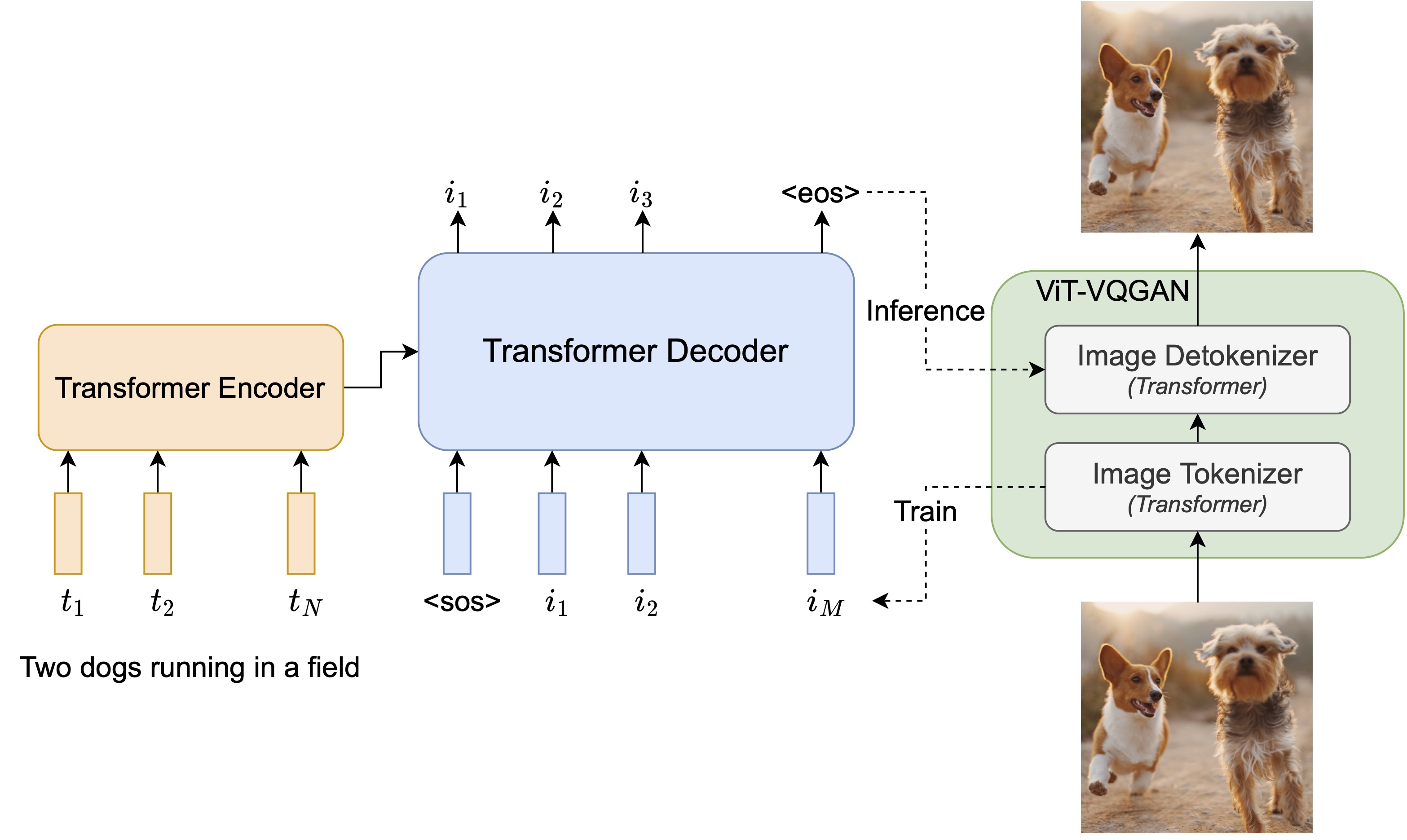We introduce the Pathways Autoregressive Text-to-Image model (Parti), an autoregressive text-to-image generation model that achieves high-fidelity photorealistic image generation and supports content-rich synthesis involving complex compositions and world knowledge. Recent advances with diffusion models for text-to-image generation, such as Google’s Imagen, have also shown impressive capabilities and state-of-the-art performance on research benchmarks. Parti and Imagen are complementary in exploring two different families of generative models – autoregressive and diffusion, respectively – opening exciting opportunities for combinations of these two powerful models.
Parti treats text-to-image generation as a sequence-to-sequence modeling problem, analogous to machine translation – this allows it to benefit from advances in large language models, especially capabilities that are unlocked by scaling data and model sizes. In this case, the target outputs are sequences of image tokens instead of text tokens in another language. Parti uses the powerful image tokenizer, ViT-VQGAN, to encode images as sequences of discrete tokens, and takes advantage of its ability to reconstruct such image token sequences as high quality, visually diverse images.
We observed the following results:
- Consistent quality improvements by scaling Parti’s encoder-decoder up to 20 billion parameters.
- State-of-the-art zero-shot FID score of 7.23 and finetuned FID score of 3.22 on MS-COCO.
- Effectiveness across a wide variety of categories and difficulty aspects in our analysis on Localized Narratives and PartiPrompts, our new holistic benchmark of 1600+ English prompts that we release as part of this work.
PartiPrompts (P2) is a rich set of over 1600 prompts in English that we release as part of this work. P2 can be used to measure model capabilities across various categories and challenge aspects.
P2 prompts can be simple, allowing us to gauge the progress from scaling. They can also be complex, such as the following 67-word description we created for Vincent van Gogh’s The Starry Night (1889):
Oil-on-canvas painting of a blue night sky with roiling energy. A fuzzy and bright yellow crescent moon shining at the top. Below the exploding yellow stars and radiating swirls of blue, a distant village sits quietly on the right. Connecting earth and sky is a flame-like cypress tree with curling and swaying branches on the left. A church spire rises as a beacon over rolling blue hills.
Parti is a collaboration that spans authors across multiple Google Research teams:
Jiahui Yu*, Yuanzhong Xu†, Jing Yu Koh†, Thang Luong†, Gunjan Baid†, Zirui Wang†, Vijay Vasudevan†, Alexander Ku†, Yinfei Yang, Burcu Karagol Ayan, Ben Hutchinson, Wei Han, Zarana Parekh, Xin Li, Han Zhang, Jason Baldridge†, Yonghui Wu*
*Equal contribution †Core contribution
We would like to thank Elizabeth Adkison, Fred Alcober, Tania Bedrax-Weiss, Krishna Bharat, Nicole Brichtova, Yuan Cao, William Chan, Zhifeng Chen, Eli Collins, Claire Cui, Andrew Dai, Jeff Dean, Emily Denton, Toju Duke, Dumitru Erhan, Brian Gabriel, Zoubin Ghahramani, Jonathan Ho, Michael Jones, Sarah Laszlo, Quoc Le, Lala Li, Zhen Li, Sara Mahdavi, Kathy Meier-Hellstern, Kevin Murphy, Paul Natsev, Paul Nicholas, Mohammad Norouzi, Ruoming Pang, Niki Parmar, Fernando Pereira, Slav Petrov, Vinodkumar Prabhakaran, Utsav Prabhu, Evan Rapoport, Keran Rong, Negar Rostamzadeh, Chitwan Saharia, Gia Soles, Austin Tarango, Ashish Vaswani, Tao Wang, Tris Warkentin, Austin Waters and Ben Zevenbergen for helpful discussions and guidance, Peter Anderson, Corinna Cortes, Tom Duerig, Douglas Eck, David Ha, Radu Soricut and Rahul Sukthankar for paper review and feedback, Erica Moreira and Victor Gomes for help with resource coordination, Tom Small for designing the Parti watermark, Google ML Data Operations team for collecting human evaluations on our generated images and others in the Google Brain team and Google Research team for support throughout this project.
We would also like to give particular acknowledgments to the Imagen team, especially Mohammad Norouzi, Chitwan Saharia, Jonathan Ho and William Chan, for sharing their near complete results prior to releasing Imagen; their findings on the importance of CF guidance were particularly helpful for the final Parti model. We also thank the Make-a-Scene team, especially Oran Gafni, for helpful discussion on CF-guidance implementation in autoregressive models. We thank the DALL-E 2 authors, especially Aditya Ramesh, for helpful discussion on MS-COCO evaluation. We also thank the DALL-Eval authors, especially Jaemin Cho, for help with reproducing their numbers.
This is not an officially supported Google product.


